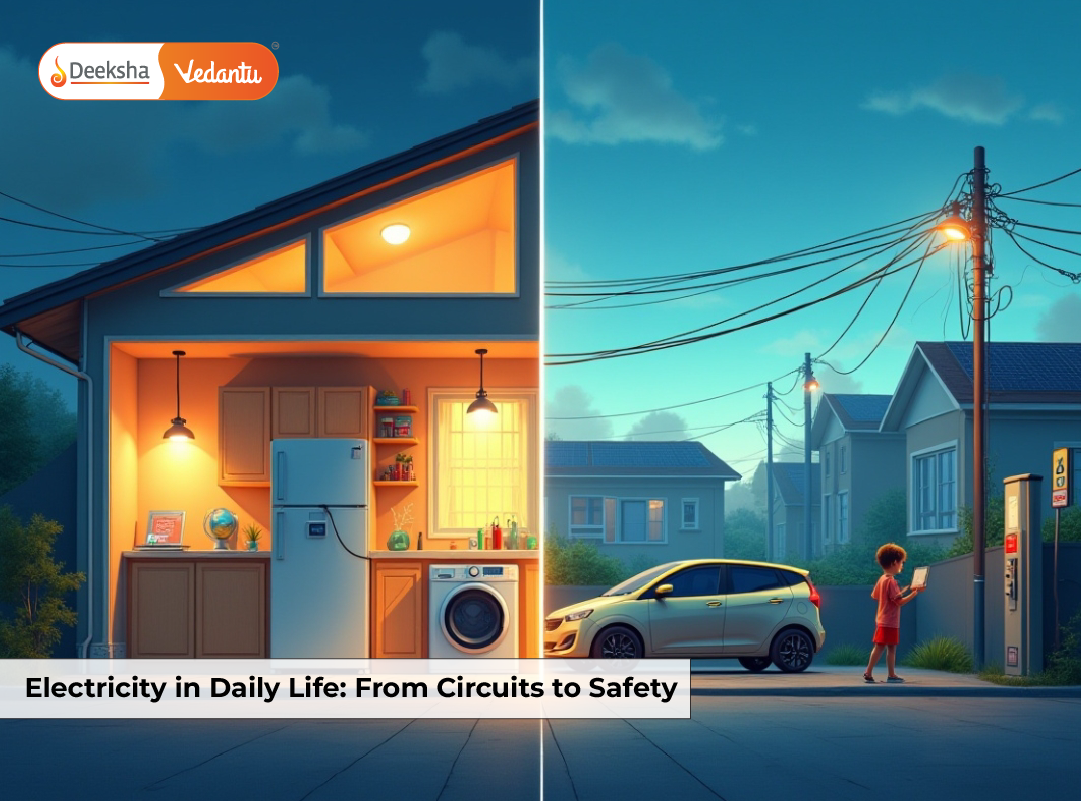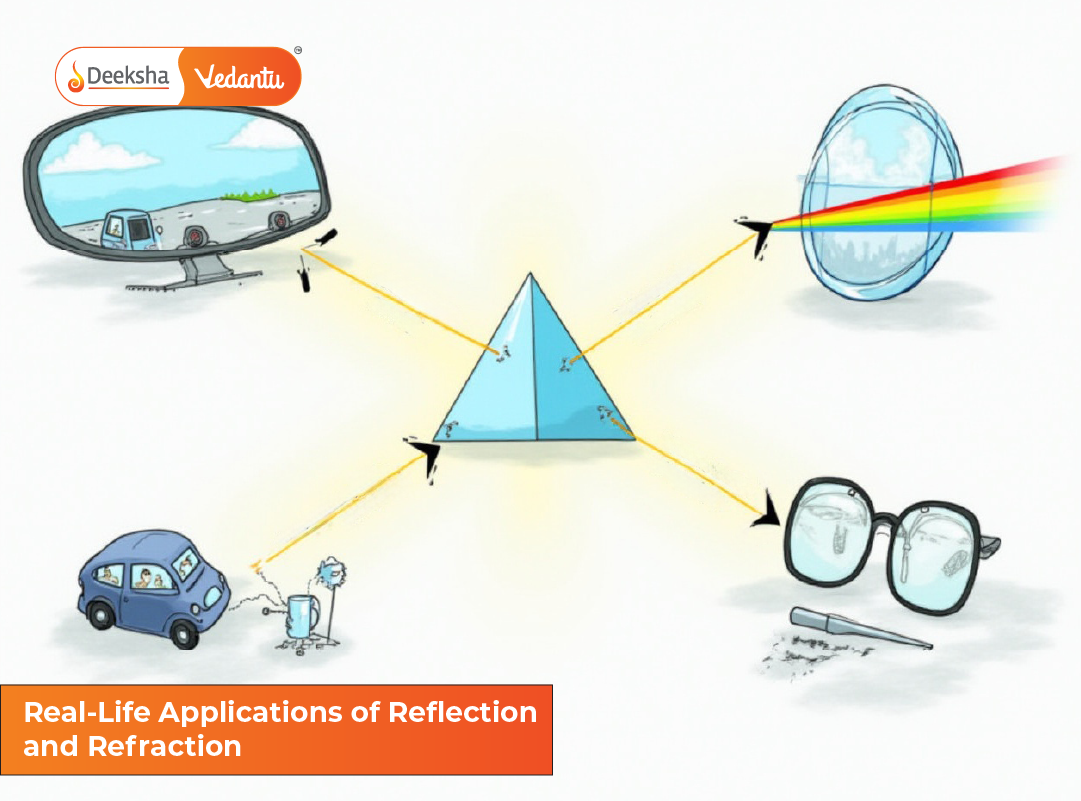Introduction
Electricity is everywhere — in your lights, fans, mobile chargers, refrigerators, and even the Wi-Fi router. It’s hard to imagine modern life without it. But do you know how this invisible force works behind the scenes?
Understanding how electricity functions in everyday life not only improves our awareness of safety but also builds a foundation for future careers in science and technology. It empowers students to think critically about the devices they use and how to use them more responsibly.
In this blog, we’ll explore the importance of electricity in daily life, break down how circuits work in household appliances, identify circuit components used at home, and highlight essential home electrical safety tips. We’ll also look at how different forms of energy are converted through electrical appliances and why energy conservation matters. Additionally, we’ll consider innovations in electrical technology and how they are shaping our homes and communities.
What is Electricity?
Electricity is the flow of electric charge, typically carried by electrons moving through a wire. This electric charge is the energy source for operating devices like bulbs, fans, computers, and even electric vehicles.
It can be generated through various methods, such as:
- Hydropower plants (using water)
- Thermal power plants (using fossil fuels)
- Solar panels (converting sunlight into electricity)
- Wind turbines (using wind energy)
Electricity can also be stored in batteries for later use, making it incredibly versatile and accessible. From handheld devices to entire city grids, electricity is the invisible power source enabling countless daily functions.
Read more on the fundamentals: Electricity
Components of a Household Electrical Circuit
Every domestic electrical system consists of essential components that allow current to flow safely and effectively. Understanding these helps us troubleshoot common issues and make better choices in using appliances.
Pro Tip: A simple diagram showing these components can greatly enhance understanding.
Main Components:
- Electric Meter: Records the amount of electricity used
- Main Fuse/Miniature Circuit Breaker (MCB): Prevents excess current from damaging the circuit
- Wires: Conductors that carry electricity from the source to devices
- Switches: Control the flow of electricity
- Sockets: Provide points for plugging in electrical devices
- Appliances: Convert electric energy into usable forms like light, heat, or motion
- Distribution Board: Houses MCBs and distributes electricity across rooms
In addition, surge protectors and voltage stabilizers are often installed to regulate fluctuations and safeguard sensitive appliances such as televisions and refrigerators.
Detailed diagrams and more: Circuit Diagram
How Circuits Work in Household Appliances
Closed Circuit:
For any appliance to function, the circuit must be closed. A closed path allows current to flow uninterrupted from the source to the device and back. If the path is broken, electricity cannot complete its journey.
Series vs Parallel Circuits:
- Series Circuits: Current flows through one path. If one appliance fails, the whole circuit breaks. Rare in modern homes.
- Parallel Circuits: Current splits into multiple paths. Common in homes to operate appliances independently and ensure continuity.
Explore real-world setup: Domestic Electric Circuits
Example – Refrigerator:
- Uses a compressor and fan motor powered by electricity
- Thermostat controls the temperature by automatically opening and closing the electrical path, much like a traffic signal regulating flow
- Defrost heater and lights are also controlled by electric circuits
Example – Washing Machine:
- Electricity powers the motor, water valves, and digital control system
- Sensor systems ensure safety, load balancing, and temperature control
- Spin cycles, rinse, and drain are all regulated using electric timers and relays
Example – Microwave Oven:
- Uses high-frequency electromagnetic waves to heat food
- Timer circuit ensures precise heating durations
- Interlocking door mechanism prevents accidental exposure to microwaves
Additional Examples:
- Air Conditioners use capacitors to start the compressor motor and use electricity for fan motors, sensors, and display systems.
- Smart Lights and Automated Home Systems use programmable circuits to respond to voice commands or schedule-based triggers.
Resistance and Electrical Efficiency
Resistance is the opposition offered by a material to the flow of electric current. The higher the resistance, the more energy is lost as heat.
Why Resistance Matters:
- Impacts energy efficiency
- Affects appliance performance
- Can cause overheating if not managed properly
Key Formula:
Ohm’s Law: V = IR
- V: Voltage
- I: Current
- R: Resistance
Resistance is affected by:
- Length of wire: Longer wires = more resistance
- Thickness of wire: Thinner wires = more resistance
- Material used: Copper has less resistance than iron
- Temperature: Higher temperature increases resistance
A practical example: When a room heater or geyser runs too long, wires may heat up due to resistance, which can lead to energy wastage or even fire hazards if not managed with proper wiring.
Multiple resistors? Learn about combinations here: Resistance of a System of Resistors
Electricity and Magnetism in Appliances
Electricity can produce a magnetic field. This principle is used in many household devices.
Electric Motors:
Used in fans, blenders, and mixers. A current-carrying coil placed in a magnetic field experiences a force, causing rotation.
Transformers:
- Used in power supplies of TVs, refrigerators
- Helps in stepping voltage up or down
- Reduces loss in transmission lines
Induction Coils:
- Found in induction stoves
- Generate heat by creating eddy currents in the cooking vessel
- Efficient and safe alternative to open flame stoves
Explore this concept: Force on a Current-Carrying Conductor in a Magnetic Field
Home Electrical Safety Tips
Electricity is helpful but can be dangerous if not handled properly. Follow these home electrical safety tips:
- Never overload a socket
- Turn off appliances when not in use
- Use appliances with ISI certification (Indian Standards Institute mark ensures the appliance meets national safety standards)
- Keep electrical devices away from water
- Avoid running cords under carpets
- Educate children about electrical safety
- Use Residual Current Devices (RCDs) for extra protection
- Regularly check wiring for signs of wear or overheating
- Hire qualified electricians for home wiring and repairs
- Install smoke detectors and ensure proper earthing
Safety doesn’t end with installation. Regular maintenance and awareness of warning signs like burning smells, flickering lights, or tripping circuits are key to long-term protection.
Real-Life Applications of Electricity
In the Kitchen:
- Microwave: Uses electromagnetic waves
- Induction Stove: Heats via magnetic field interaction
- Mixer Grinder: Works on a motor-driven mechanism
- Electric Kettle & Toaster: Convert electricity into heat quickly
In Communication:
- Mobile charging
- Internet routers
- Wi-Fi extenders and smart devices
- Modems and backup power banks
In Lighting and Cooling:
- LED bulbs for energy efficiency
- Ceiling fans and air conditioners
- Smart lights and automated HVAC systems
In Healthcare:
- Electric thermometers
- Nebulizers
- Refrigerators for vaccines and medicines
- CPAP machines and home-use diagnostic tools
Frequently Asked Questions
1. Why are most home circuits parallel and not series?
Parallel circuits ensure that one faulty appliance doesn’t shut down the entire system. They also allow each appliance to receive full voltage.
2. What is the role of a fuse?
It protects devices by breaking the circuit during overload, preventing fire hazards and equipment damage.
3. Why should wires not run under carpets?
They can overheat and cause fires, especially if heavy furniture compresses them and restricts ventilation.
4. What are the basic components of a home circuit?
Meter, fuse or MCB, wires, switches, sockets, appliances, and distribution boards.
5. How do electric motors work in daily appliances?
They convert electrical energy into motion using magnetic force, following principles of electromagnetism.
Conclusion
Electricity is an essential part of our lives, powering everything from entertainment systems to life-saving medical equipment. By understanding electricity in daily life, how circuits work, and following home electrical safety tips, students can become more informed and responsible users.
Next time you plug in a charger or flip a switch, take a moment to think about the science making it happen. Observing the electrical devices around you and asking how they function can turn everyday moments into learning opportunities.
Energy efficiency and safe electrical practices not only reduce bills but also protect lives. Let’s stay informed and stay safe!
Explore more physics lessons, circuit simulations, and real-world examples on Deeksha Vedantu’s platform.
Table of Contents















Get Social